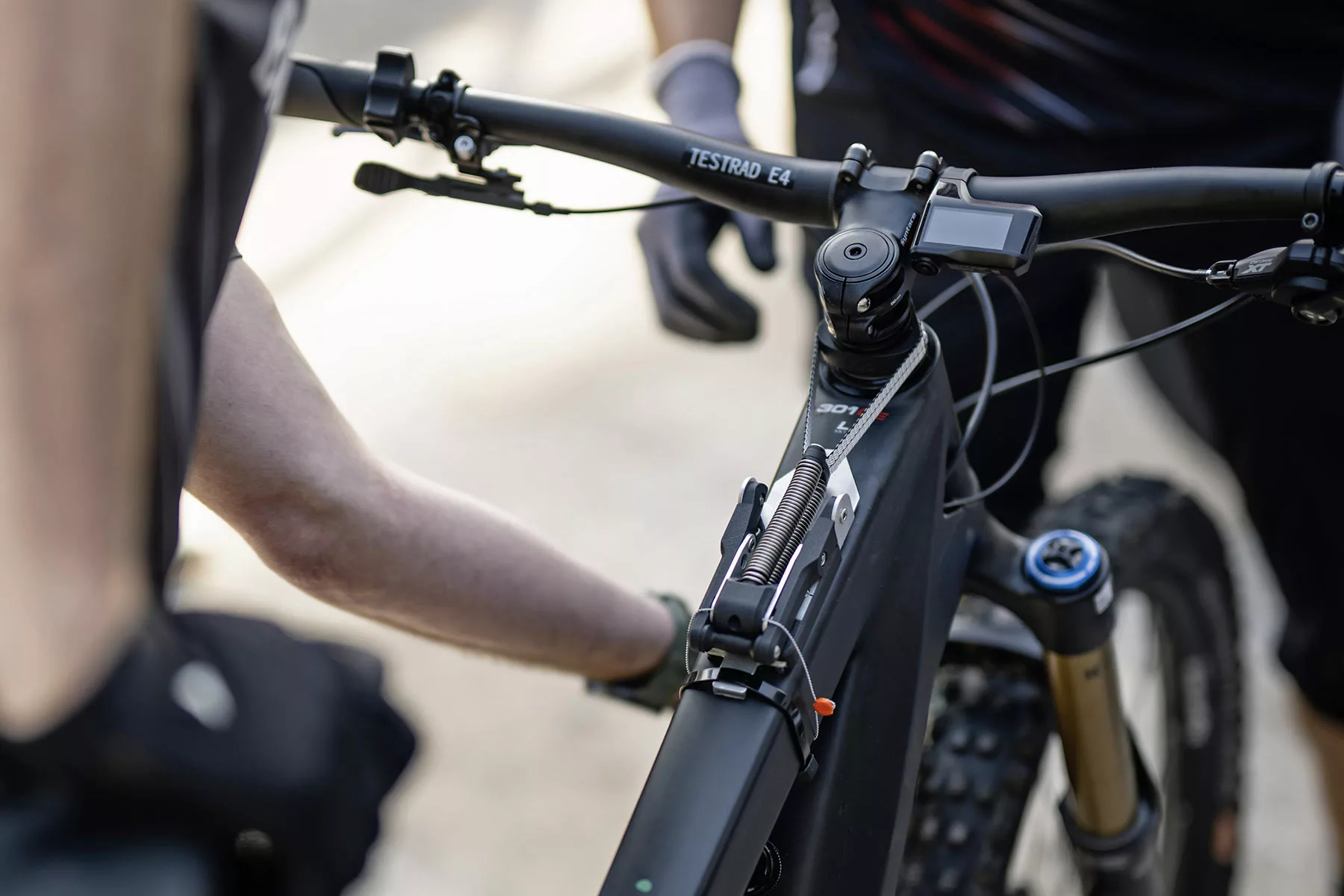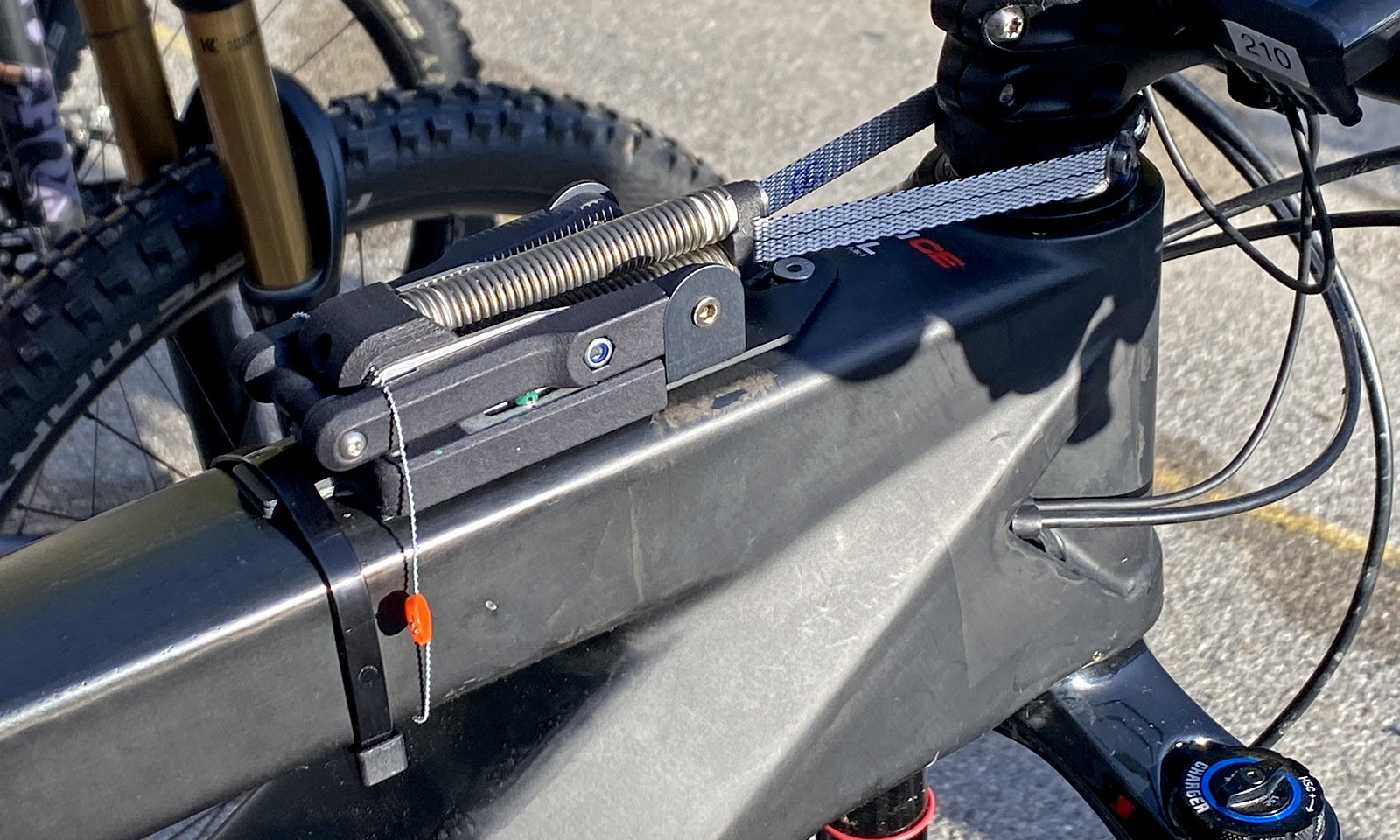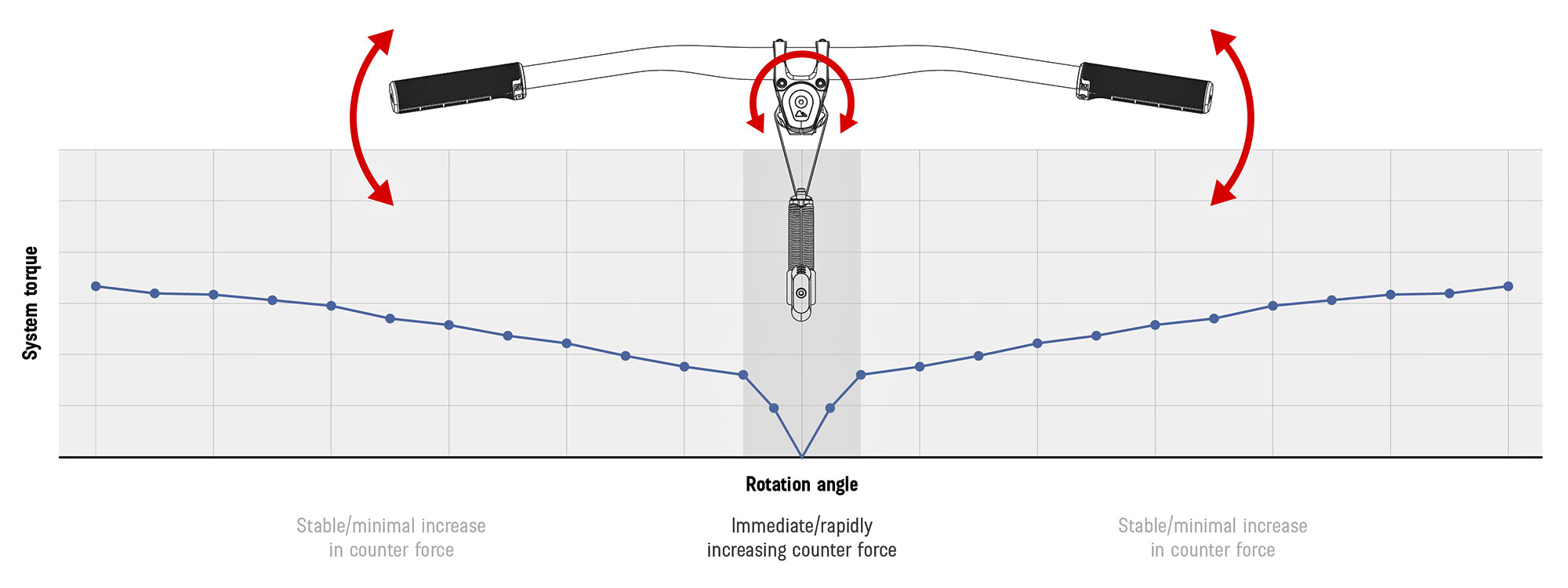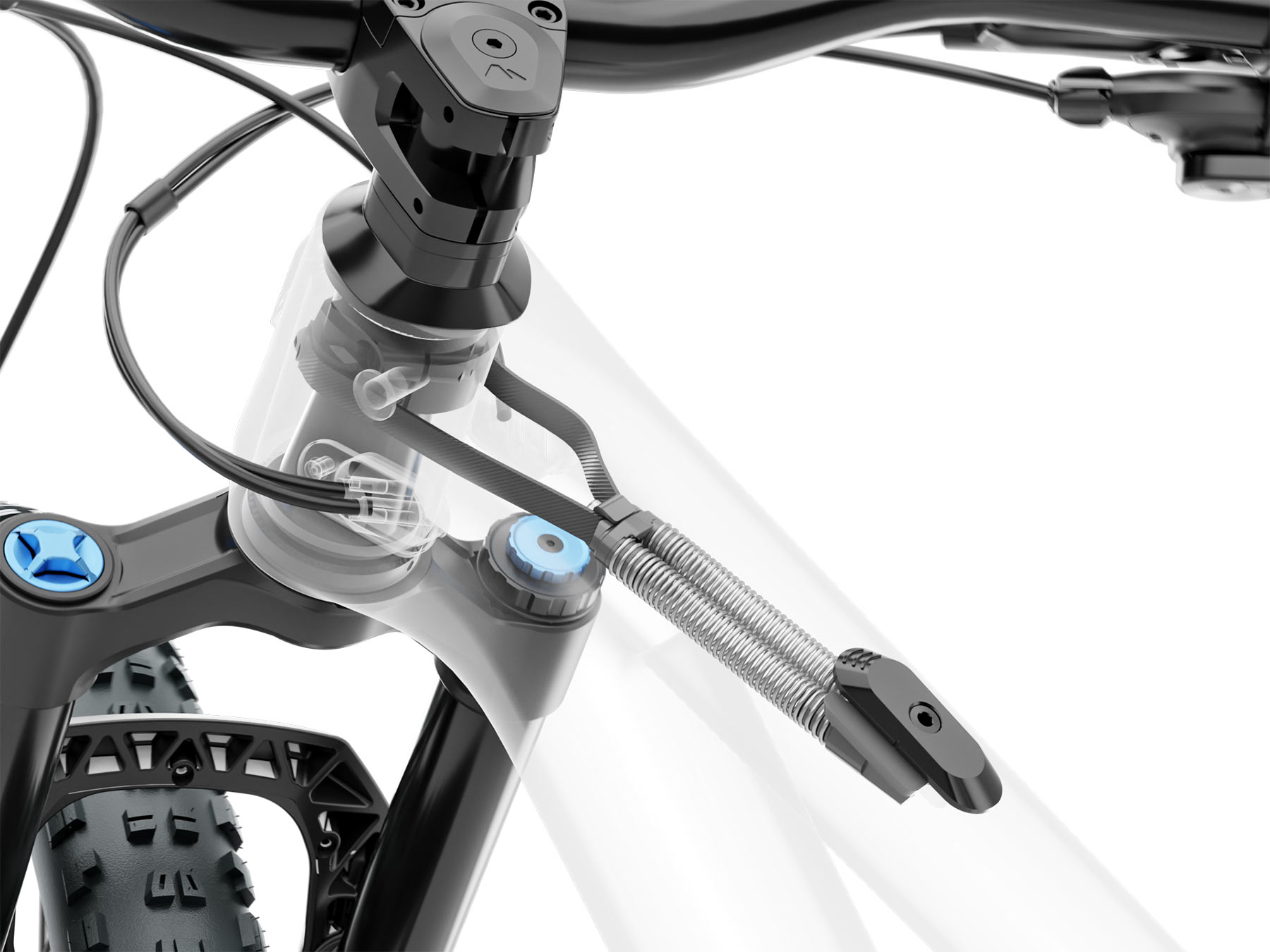Let’s all give Syntace & Liteville founder Jo Klieber a bit of the benefit of the doubt when we talk about his new KIS steering stabilizer concept for just a moment. This odd-looking little mousetrap attached to the top of the toptube of some prototype mountain bikes we’ve had a chance to test out… it is indeed odd. Starting from the handling we’ve all come to know and appreciate on our modern mountain bikes, the KIS steering stabilizer does actually change how it feels to ride an otherwise familiar bike.
And it will require some rewiring your brain… relearning how to ride a bike… but it has some real benefits too…
KIS steering stabilizer reimagines handling
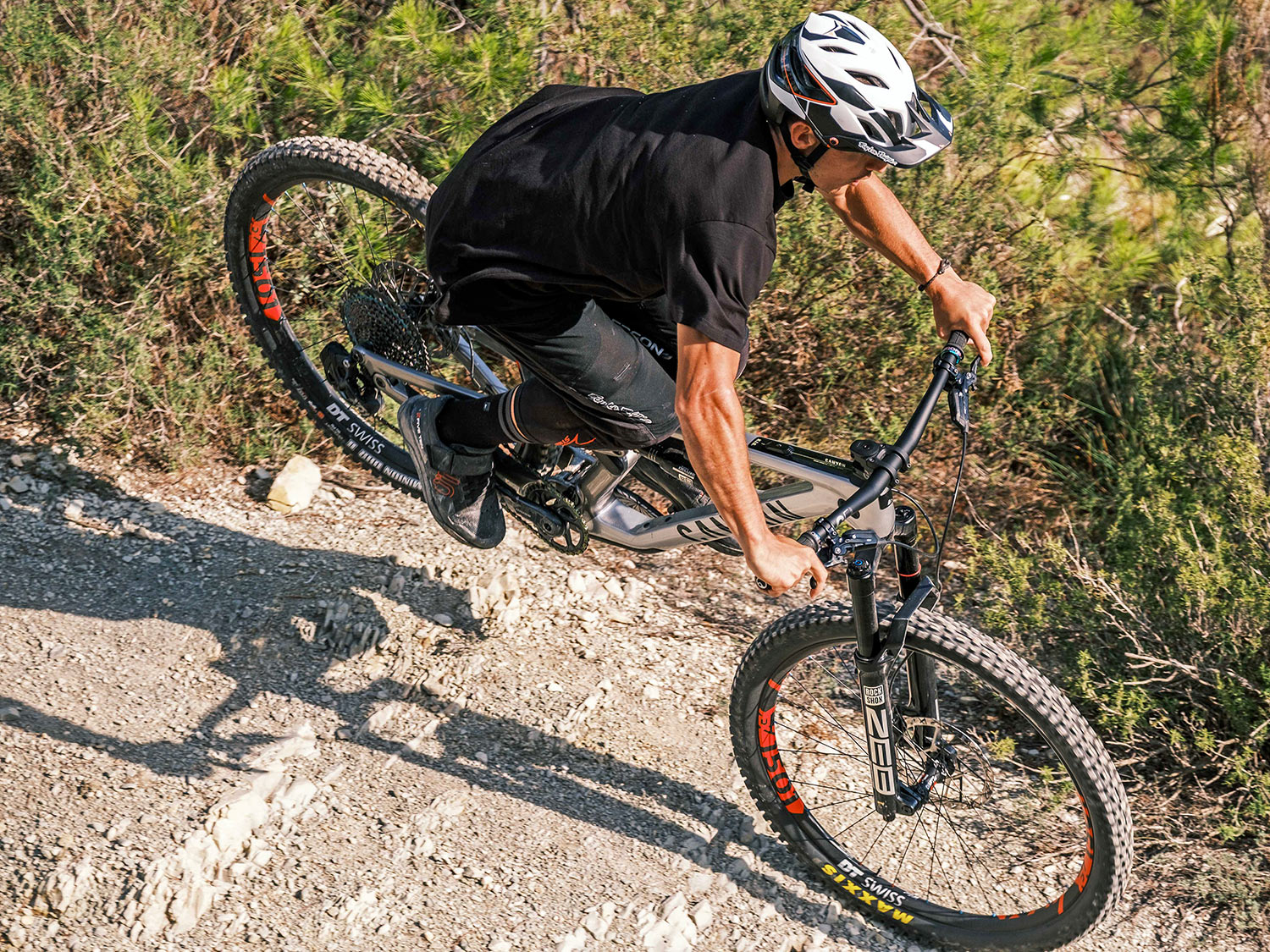
At first go, it doesn’t 100% change the ride for the better… but it seems like it might be worth riding further to see how a more stable steering system can complement the longer, slacker modern geometry we’ve all come to love.
Simply put, Syntace’s KIS steering stabilizer concept aims to completely rethink modern bike handling. Taking some inspiration from the self-centering steering of modern cars that helps passively correct for any surface imperfection that knocks the wheel off-course, KIS uses a simple spring, strap, and cam arrangement to gently pull the bar back straight again.
It’s meant to be a low-enough force that it doesn’t impede any regular steering input – you can still turn your handlebar to steer without much noticeable resistance beyond a slightly higher initial centering force. But it doesn’t slow down your steering, and doesn’t dampen steering inputs or trail feedback. Instead, it helps keep the bike more stable, upright, and pointed in pointed ahead in the direction of travel.
And it is adjustable, so you can dial-in how much countering force the system imparts to recenter your bars.
Tech details
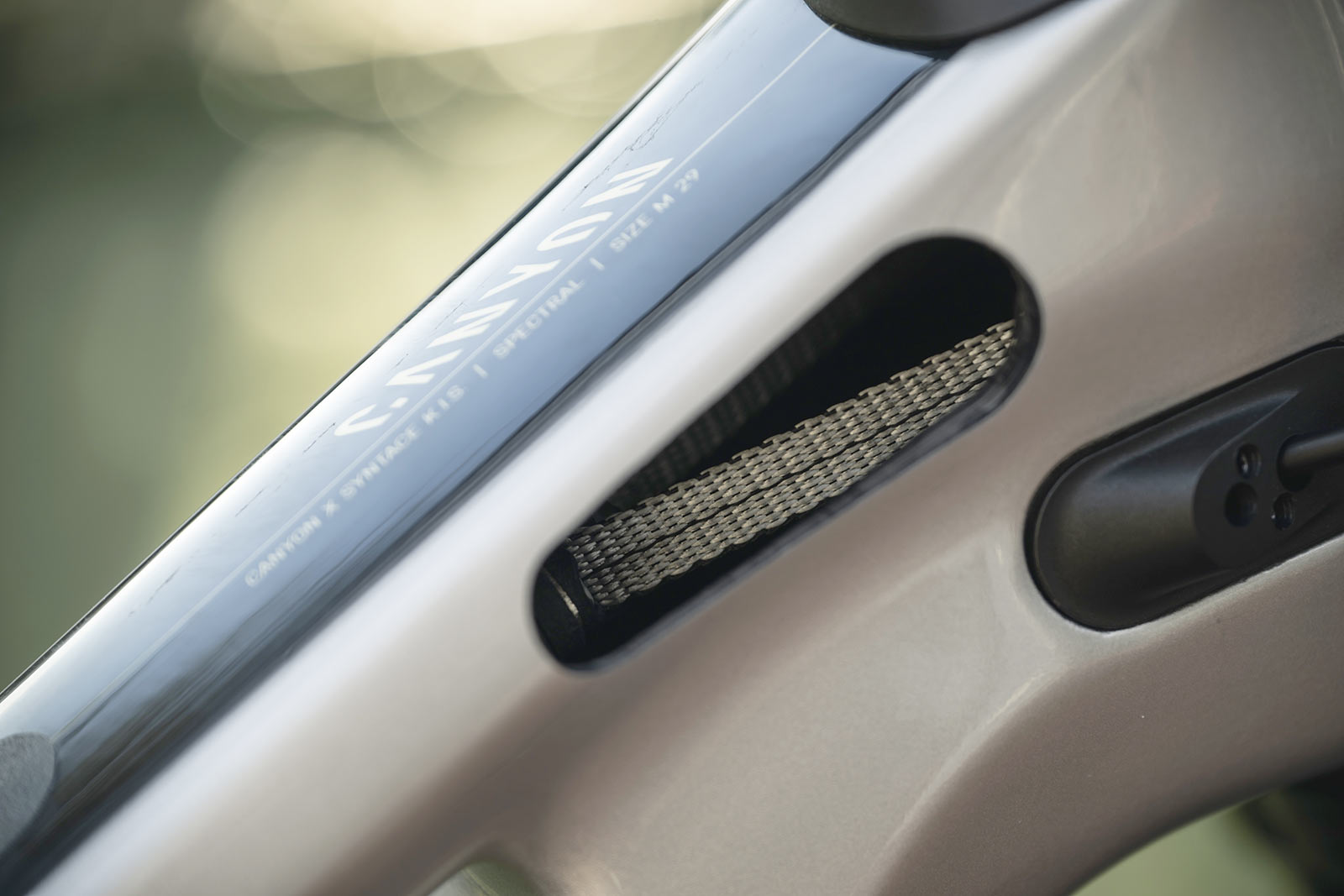
That K.I.S. acronym stands for Keep It Stable. And Syntace’s Jo Klieber worked hard to keep it simple too. But it’s not lost on him that K.I.S.S. stands for keep it simple, stupid – a mantra of not adding unnecessary complication to something.
Important to note that while I rode a Liteville ebike prototype with the system mounted externally on top of the toptube – nicknamed the ‘mousetrap’ – production versions are actually hidden inside the toptube, like on this carbon Canyon where they cut a hole in the side of the frame to show it.
The roughly 120g KIS system is composed of a polymer cam that clamps around the fork’s steerer tube, a flexible high-strength strap on either side and an assembly of 2 springs that is then attached to an adjustable plate in your toptube.
As the handlebar turns, one side of the strap loosens and the other tightens pulling tension on the springs in that direction. This causes the springs to react, pulling the bar back to center.
The triangulation of the straps – from the 2 sides of the cam on the steerer to the tip of the spring assembly – allows the KIS springs to pull the system back to center smoothly without a harsh stop in the middle. Jo calls this “a clear centering force with no clack-clack” at the end. That makes the system quiet and feel smooth in your hands as you ride.
But why?
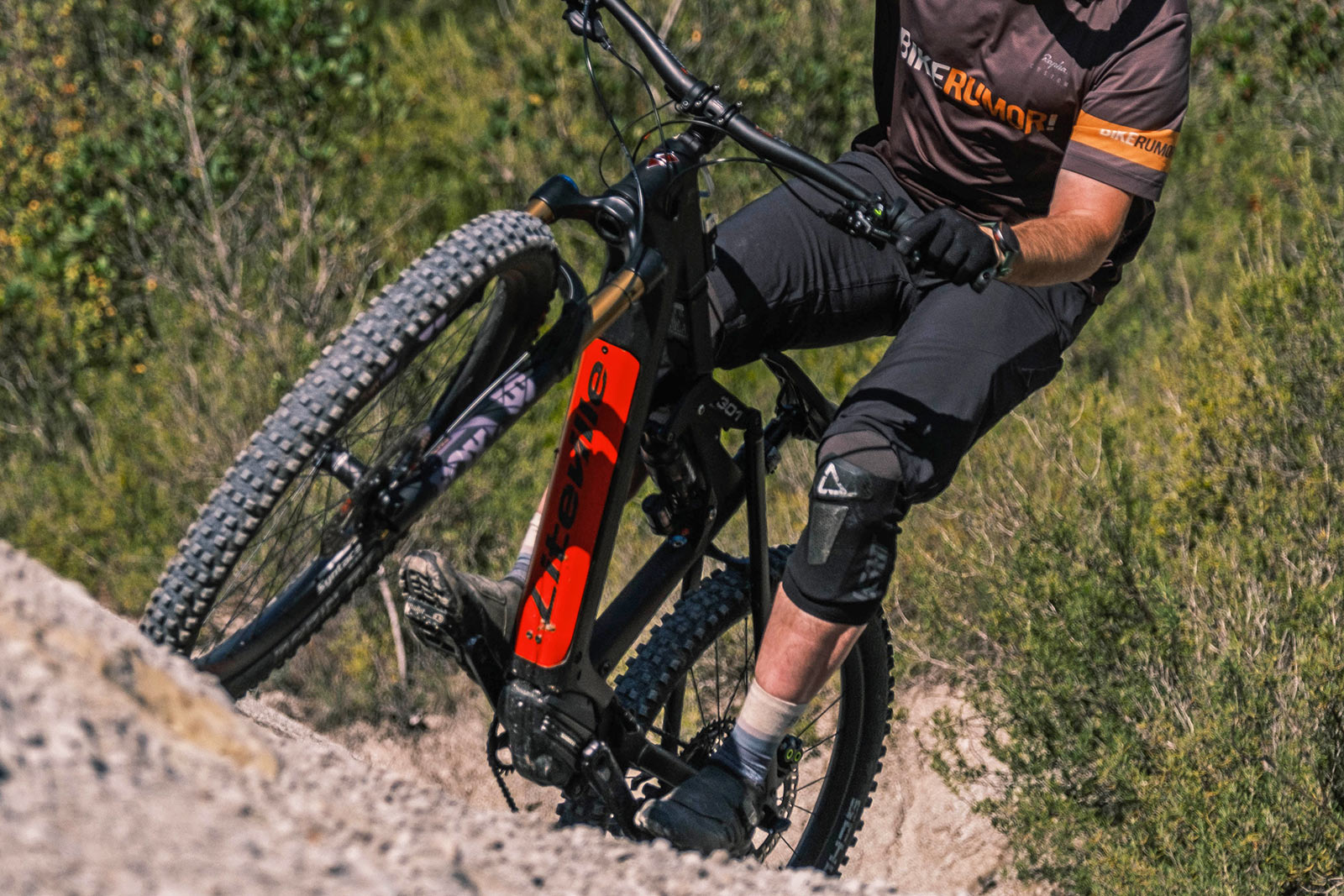
Good question. And it’s one we haven’t entirely come to terms with yet.
The concept is that since modern bikes have a steering system slacker than 90°, designers have used fork offset and the resulting fork Trail to tune the bike’s stability and to counteract for wheel flop (which actually occurs as the wheel turns sideways, actually dropping the height of the headtube, lowering Stack ~10-12mm).
Some bikes do this better than others, but the slacker bikes go, the more pronounced that wheel flop can become, and the narrower range of Trail figures that seem to work well.
The KIS steering stabilizer counteracts that force so you don’t have to constantly push to keep the bike centered and the handling in a neutral position. But it does that without slowing your steering down or introducing a force that you have to really fight when you do want to turn.
Isn’t this adding unnecessary complication?
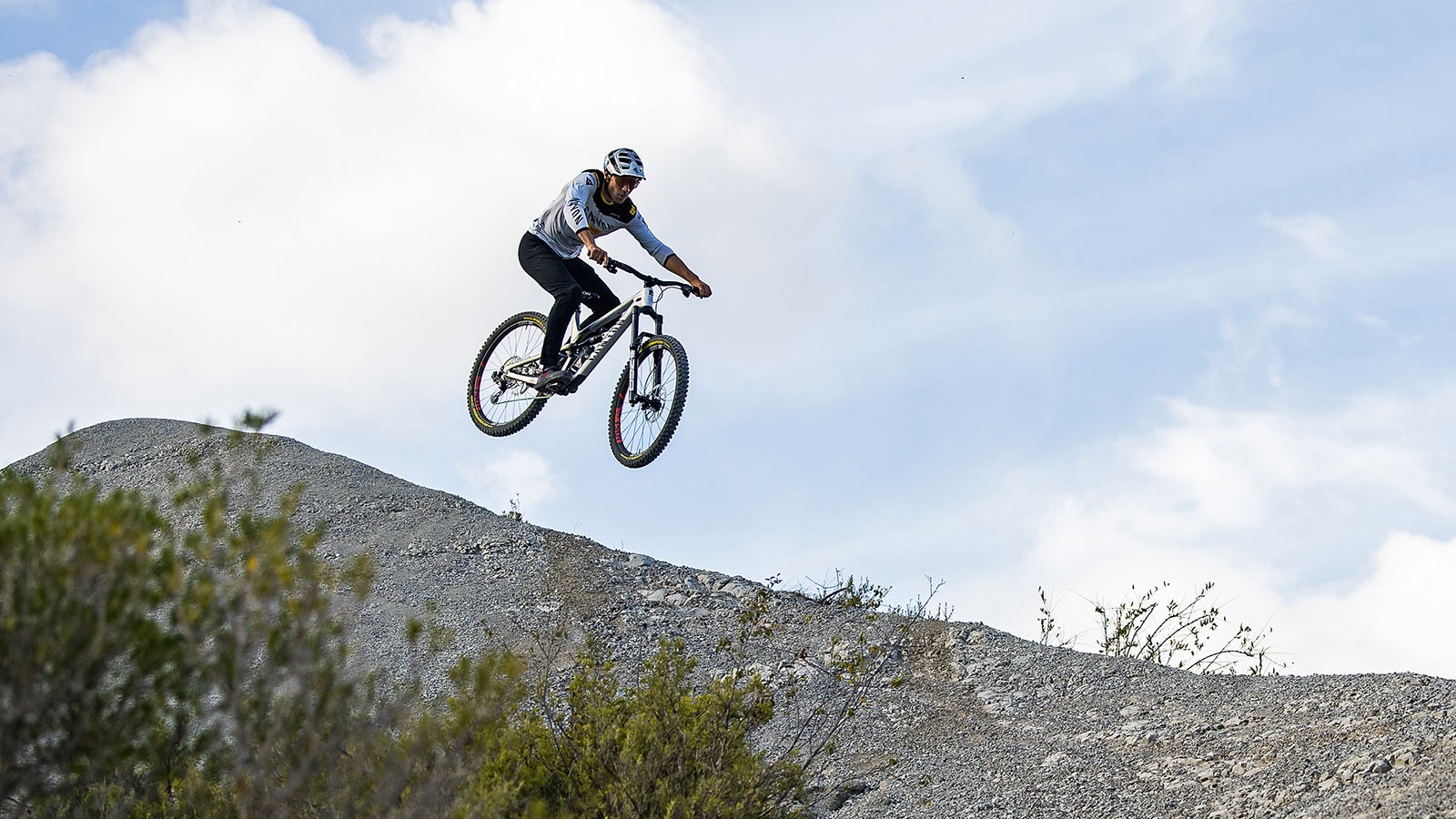
Yes, it kind of is. But it does produce a unique feeling of the bike being more connected front to back, and it seems like it really creates a more stable ride. Riding the prototypes with Fabien Barel, he described it as bringing a “new perspective to riding”.
So what is that like on the trail?
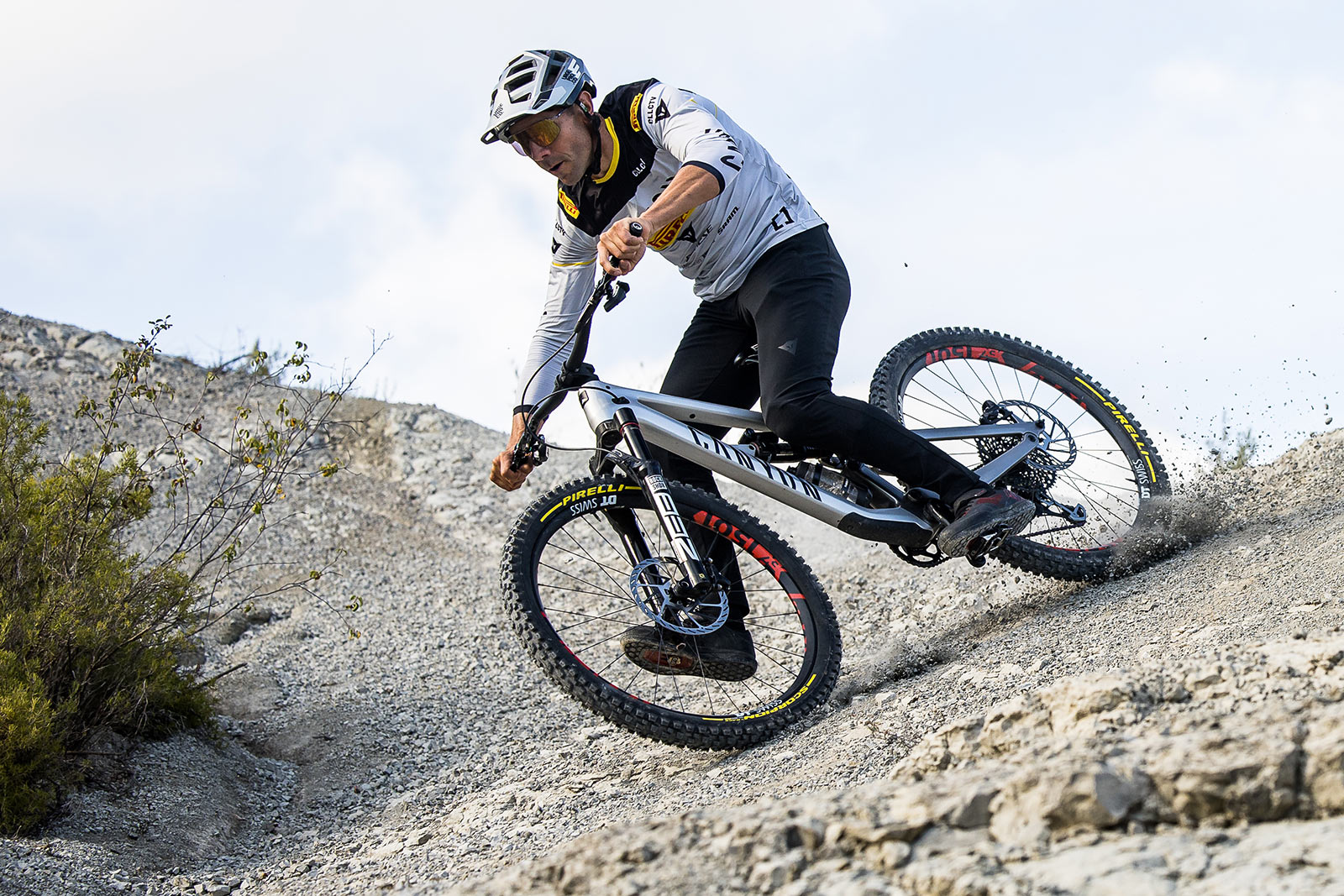
Fabien goes on to describe it like this, “When you go into a corner and lose the front end, it increases the force into the spring. The KIS increases the force and pushes the back end to match the drift… When you have no grip on the front wheel, you automatically go back to center. The more loose you get, the more it helps.”
By effectively connecting the front & rear ends of a system (the bicycle) that wasn’t really connected before (because of the freely pivoting conventional headset), it really shifts how the bike handles. Yet in a very intuitive way. And while the front wheel of a bike is really what governs all of its control as the ‘dumb’ rear end just follows along, the KIS system reconnects the two allowing handling & control inputs both the front AND rear of the bike.
OK, sounds weird and maybe interesting, right?
How can you ride one? Availability
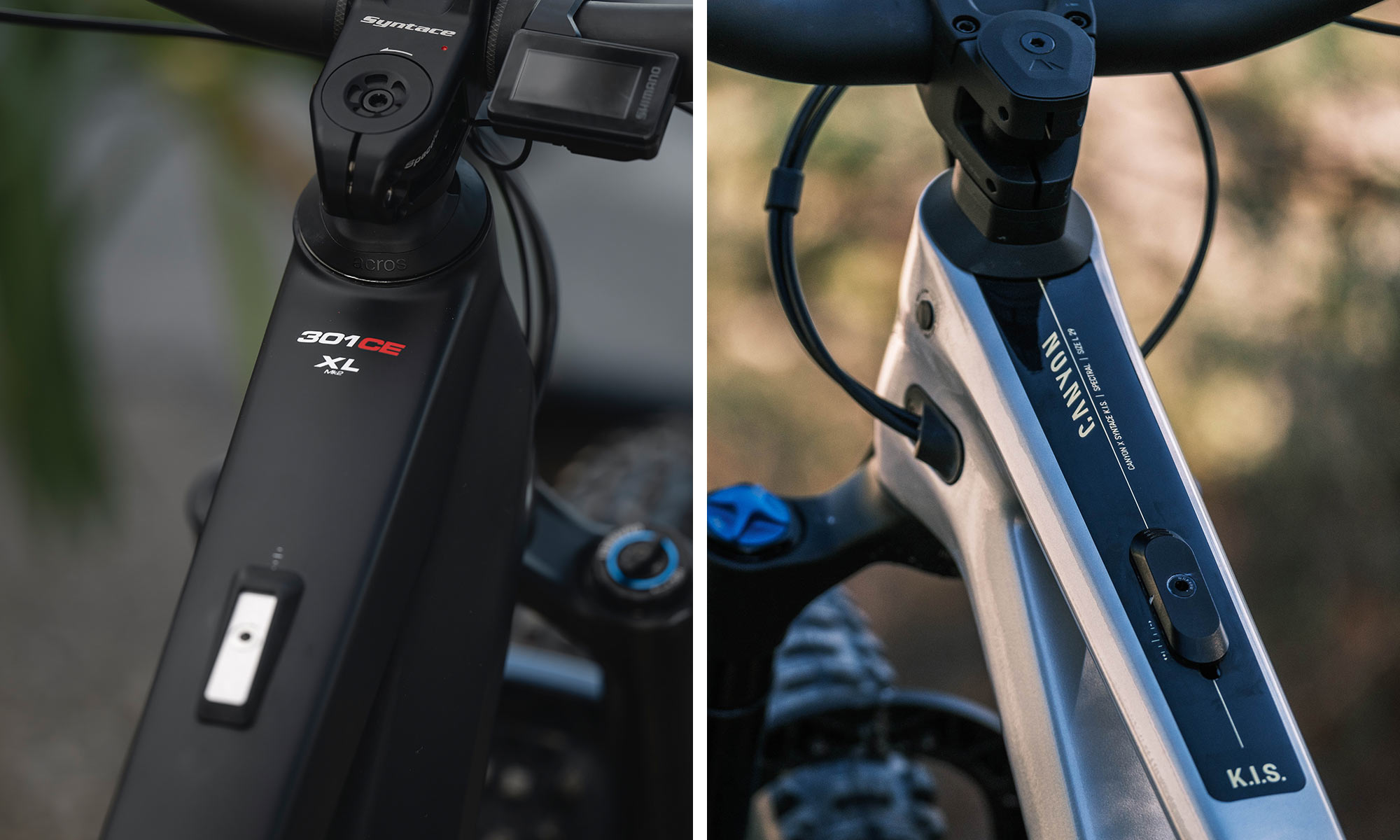
The KIS steering stabilizer system was developed and patented by Syntace, and for now it is only available on two bikes. Syntace’s own bike brand Liteville has made it available in their eMTB alloy Liteville 301 CE KIS ebike. Canyon who helped with developing KIS integration has exclusivity for the new tech for a year. They will first make it available on the limited edition carbon Canyon Spectral CF 8 KIS all-mountain bike.
I’ve ridden both Liteville & Canyon versions. Both have very different feels, and unique benefits to the bikes’ handling. And I’ll share my thoughts on each later today.
Read all about the Canyon Spectral CF 8 CLLCTV KIS in my first rides review, here.
And how Keep It Stable transforms the Liteville 301CE K.I.S. ebike, here.
